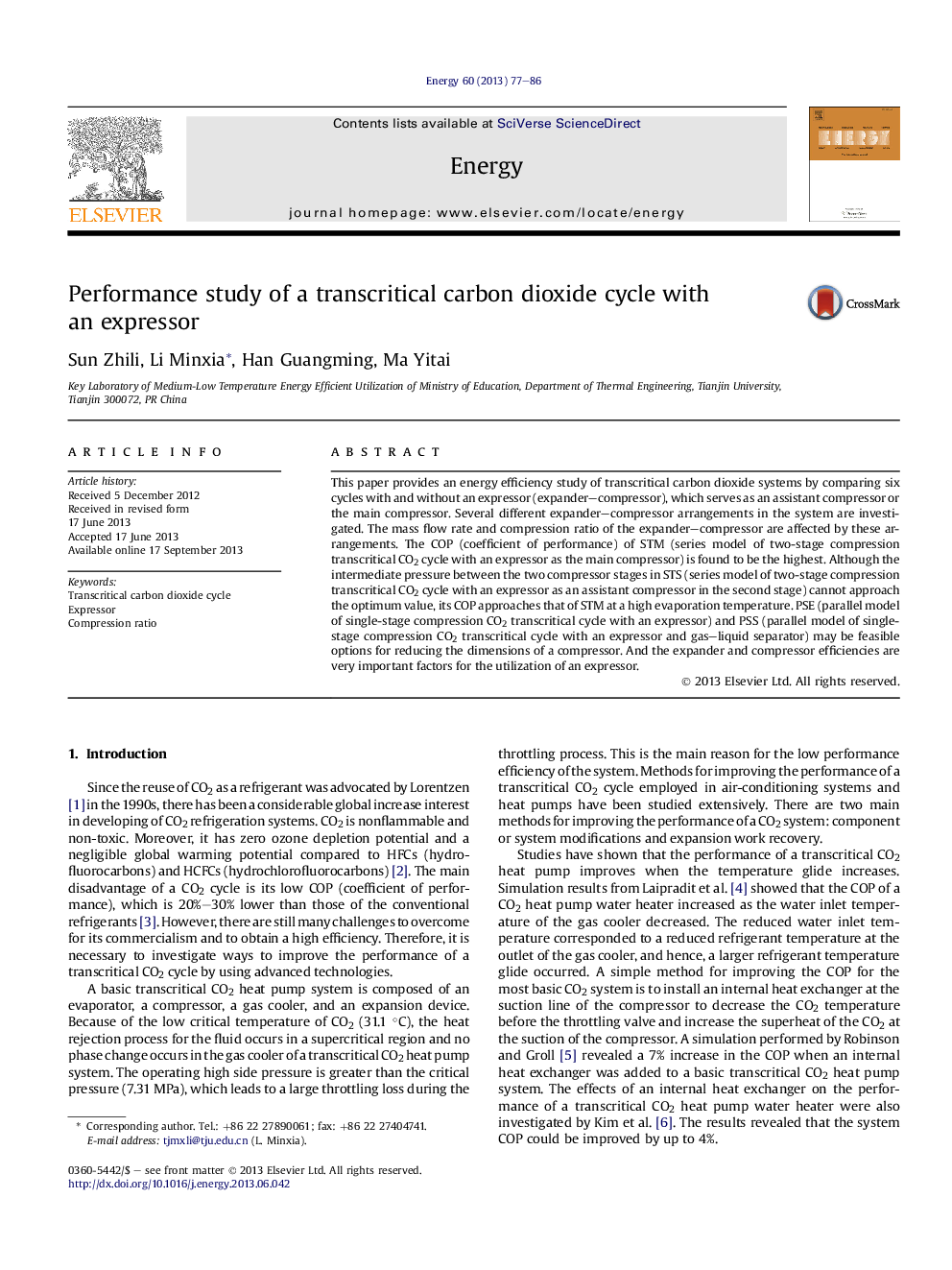| Article ID | Journal | Published Year | Pages | File Type |
|---|---|---|---|---|
| 1732607 | Energy | 2013 | 10 Pages |
This paper provides an energy efficiency study of transcritical carbon dioxide systems by comparing six cycles with and without an expressor (expander–compressor), which serves as an assistant compressor or the main compressor. Several different expander–compressor arrangements in the system are investigated. The mass flow rate and compression ratio of the expander–compressor are affected by these arrangements. The COP (coefficient of performance) of STM (series model of two-stage compression transcritical CO2 cycle with an expressor as the main compressor) is found to be the highest. Although the intermediate pressure between the two compressor stages in STS (series model of two-stage compression transcritical CO2 cycle with an expressor as an assistant compressor in the second stage) cannot approach the optimum value, its COP approaches that of STM at a high evaporation temperature. PSE (parallel model of single-stage compression CO2 transcritical cycle with an expressor) and PSS (parallel model of single-stage compression CO2 transcritical cycle with an expressor and gas–liquid separator) may be feasible options for reducing the dimensions of a compressor. And the expander and compressor efficiencies are very important factors for the utilization of an expressor.
